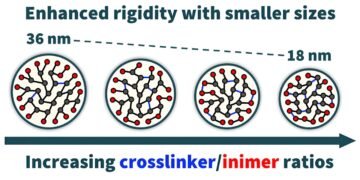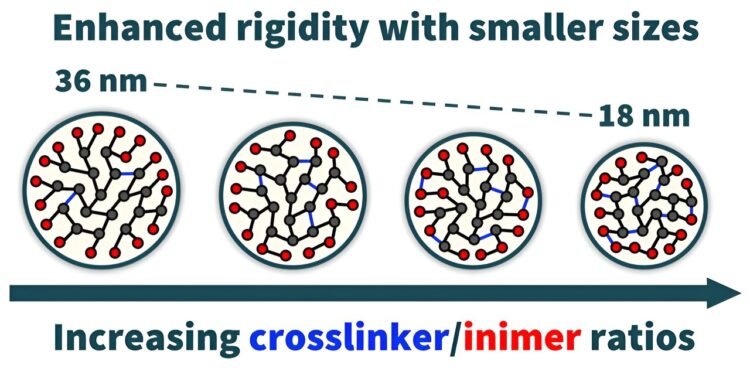A new kind of organic nanoparticle: Recent studies have shown that densely connected networks can be developed within organic nanoparticles by hyper branching and chemical cross linking.
Nanoparticles have a wide range of applications from drug delivery to electronics to air purification. Their small size and adaptable properties make them particularly valuable for technological advances and scientific research. Grafting polymers made from nanoparticles can improve the functionality of the material.
Organic nanoparticles (oNPs) are more chemically versatile than inorganic nanoparticles, allowing for functionalization and adaptation to specific biomedical and technological applications. However, existing materials have limited mechanical properties and chemical adaptability.
A recent study published in the Proceedings of the National Academy of Sciences (PNAS) examines the effects of hyper branching and oNP chemical cross linking, a process by which the two combined mechanisms achieve a densely bound network.
Krzysztof Matyjaszewski, professor of chemistry at Carnegie Mellon University, and Michael Boxstarr, professor of materials science and engineering. The results of the study demonstrate the ability to control both functional and elastic properties, providing a new “bottom-up” approach to the production of functional materials suitable for a wide range of applications. The research, supported by the Department of Energy’s Office of Basic Energy Sciences and conducted in collaboration with researchers from the University of Houston and the Max Planck Institute for Polymer Research in Germany, contributes to a fundamental understanding of the parameters that control the properties of oNPs, and the chemical methods that enable their synthesis.
“By combining these processes, we were able to demonstrate that organic nanoparticles have the ability to exhibit inorganic stiffness,” says Boxstarr.
This high degree of control over oNP structure and properties is made possible by a novel and precise method for synthesizing functional nanoparticles via atom transfer radical polymerization (ATRP), developed by chemistry doctoral student Rongguan Ying, the study’s first author. “The designed and precisely manufactured ATRP-functionalized organic nanoparticles are in fact new giant single macromolecules with molecular weights up to 100 million daltons,” Matyjaszewski said.
A key feature of the new oNP system is the macroinitiator property that allows versatile grafting modifications. The resulting brush-grafted oNPs open up innovative applications in various nanomaterial technologies, either through direct assembly or integration.
“The incorporation of the functionality described in this study opens the door to organic nanoparticles that further improve the optical properties of materials,” Bockstaller said.
Future work by Bockstaller and Matyjaszewski’s groups will build on this work to further explore functionalization options, such as fluorescence, for this new class of oNPs and measure their performance in real applications.
Source: Carnegie Mellon University Materials Science and Engineering





































